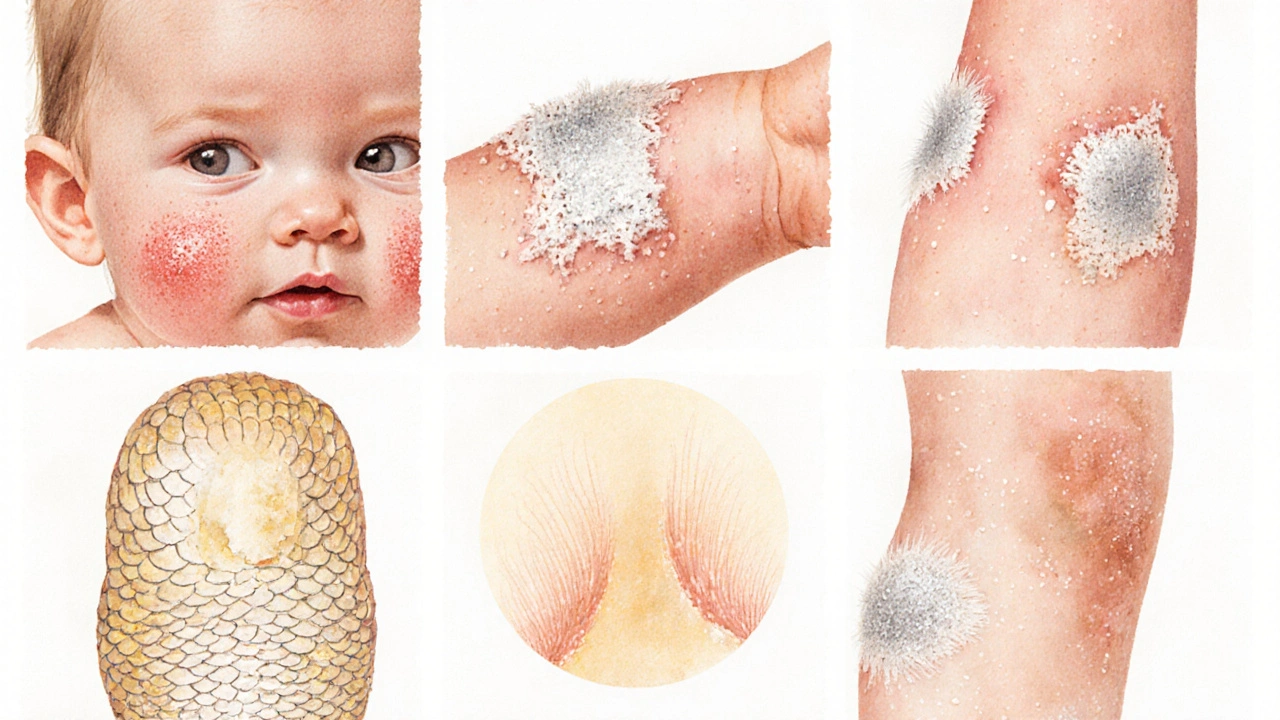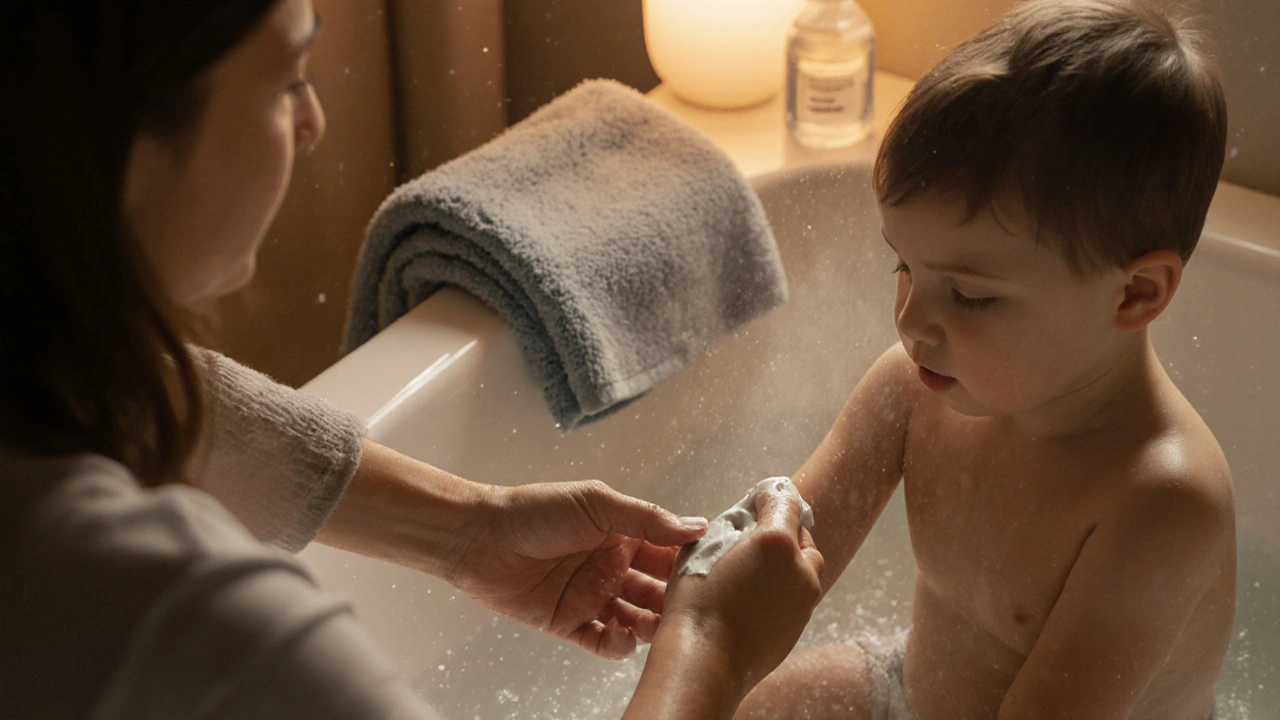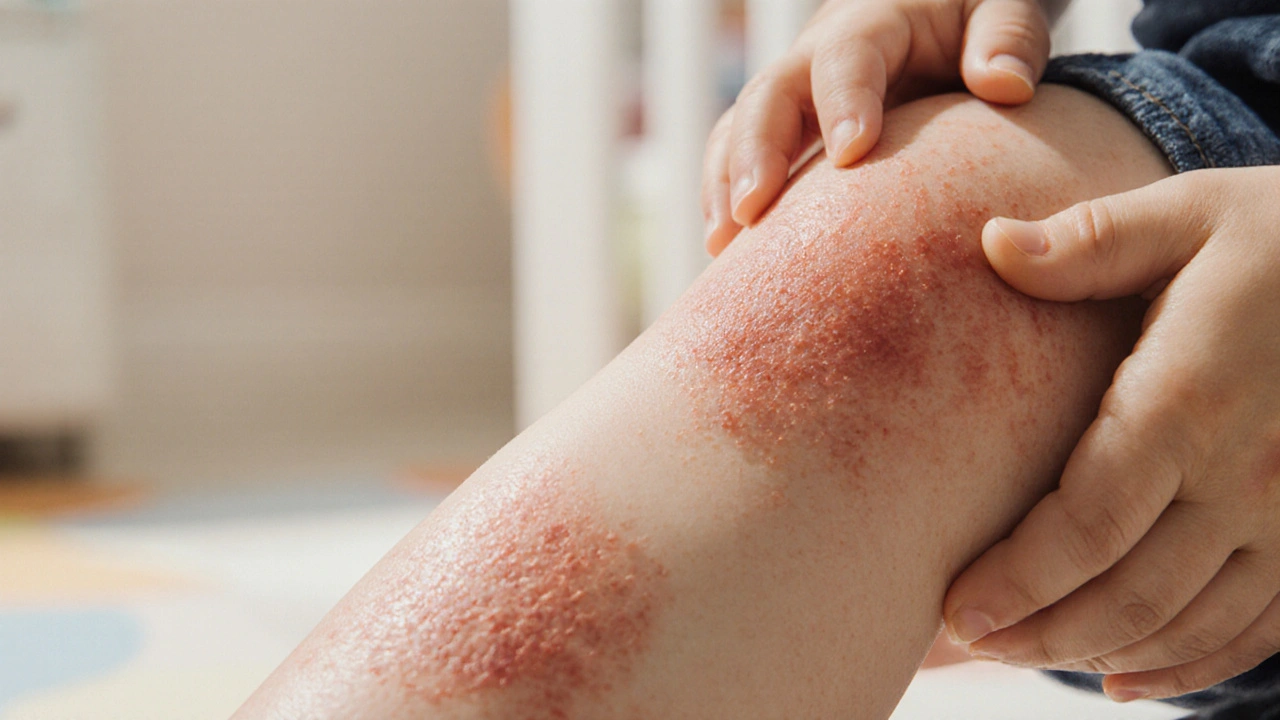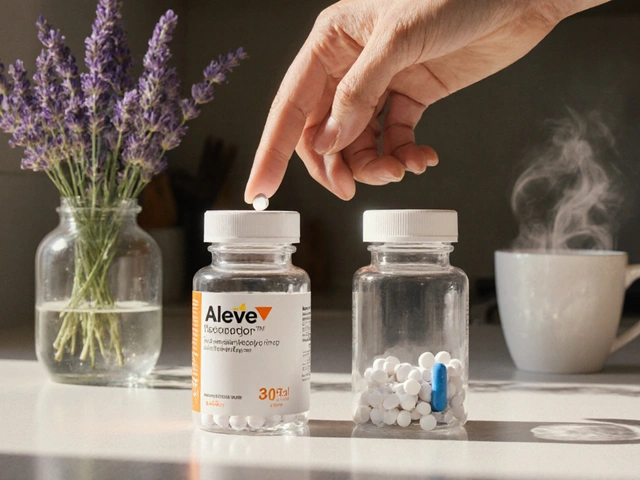Seeing patches of dry, flaky or thickened skin on your child can feel alarming. Most of the time, these scaly skin in children are harmless and manageable at home, but a few can signal a deeper issue that needs professional care. This guide walks you through the most common causes, how to tell them apart, and what steps you can take right now.
Key Takeaways
- Scaly overgrowths are usually eczema, psoriasis, ichthyosis, seborrheic dermatitis, or fungal infections.
- Look for clues like itching intensity, pattern, age of onset, and trigger factors.
- Basic skin‑care routines (moisturising, gentle cleansers, avoiding irritants) help most conditions.
- Seek medical advice if the rash spreads quickly, is painful, oozes, or doesn’t improve after two weeks.
- Early identification can prevent complications and improve quality of life for your child.
What Are Scaly Overgrowths?
In dermatology, "scaly overgrowths" refer to areas where the outer skin layer (the stratum corneum) becomes thicker or flakes off more than usual. The skin tries to protect itself against irritants, dehydration, or a faulty buildup of skin cells. Kids’ skin is especially sensitive, so even minor triggers can cause noticeable changes.
Common Conditions Behind Scaly Patches
Below are the five conditions you’ll most likely encounter. Each is marked up with schema.org microdata for easy reference.
Eczema is a chronic inflammatory condition that makes the skin red, itchy and often scaly. It typically appears in infants and toddlers, especially on the face, elbows, and knees.
Psoriasis is an autoimmune disorder where skin cells multiply too quickly, forming silvery‑white plaques. In children, it often shows up on the scalp, elbows, and lower back.
Ichthyosis describes a group of genetic disorders that cause thick, fish‑scale skin. Symptoms are present from birth or early infancy and affect the entire body.
Seborrheic Dermatitis is a common scalp condition that can spread to the eyebrows, nose folds, and behind the ears. It produces greasy, yellowish scales and mild redness.
Tinea Corporis (Ringworm) is a fungal infection that creates round, scaly patches with a clear center. It spreads by skin‑to‑skin contact or contaminated objects.

Spot the Difference - Quick Comparison
| Condition | Typical Age of Onset | Appearance | Itching Level | Common Triggers | When to Call a Doctor |
|---|---|---|---|---|---|
| Eczema | 0‑2 years | Red patches, dry flakes | High | Dry air, soaps, wool | Oozing, fever, spread beyond typical sites |
| Psoriasis | 5‑12 years | Silvery plaques, well‑defined | Moderate | Infections, stress, injury | Painful cracks, nail changes, rapid growth |
| Ichthyosis | Birth or infancy | Uniform thick scales | Low to moderate | Genetic, rarely triggers | Severe cracking, infection signs |
| Seborrheic Dermatitis | Infancy (cradle cap) or adolescence | Greasy yellow scales, redness | Low | Cold weather, oily skin | Spread to skin folds, persistent redness |
| Tinea Corporis | Anywhere, often school‑age | Ring‑shaped, raised border, clear centre | Variable | Contact with infected pets or surfaces | Rapid spread, pain, multiple lesions |
At‑Home Care Tips for Most Scaly Rashes
- Moisturise daily. Pick a fragrance‑free ointment (e.g., petrolatum or ceramide‑rich cream). Apply within three minutes of bathing to lock in moisture.
- Gentle cleansing. Use lukewarm water and a mild, sulfate‑free cleanser. Avoid regular soaps that strip natural oils.
- Identify and avoid triggers. Keep a simple diary of foods, detergents, fabrics and weather changes to spot patterns.
- Short‑course topical antifungals. If you suspect ringworm, an over‑the‑counter clotrimazole 1% cream twice daily for two weeks is often enough.
- Cool compresses. For itchy patches, a cool, damp cloth for 5‑10 minutes can soothe without scratching.
- Trim nails. Short nails reduce skin damage from scratching, lowering infection risk.
Red Flags - When to Seek Professional Help
Even with diligent home care, some signs mean you need a clinician’s eye:
- Rash spreads rapidly or crosses joints (e.g., elbows to forearms).
- Skin becomes painful, cracks open, or starts oozing pus.
- Fever, swollen lymph nodes, or general feeling of being unwell appears alongside the rash.
- Over‑the‑counter treatments give no improvement after 10‑14 days.
- Family history of genetic skin disorders (especially ichthyosis) and the child shows diffuse scaling.

Frequently Asked Questions
Frequently Asked Questions
Can I use baby shampoo on my child’s scaly scalp?
Yes, a gentle, sulfate‑free baby shampoo can help keep the scalp clean without aggravating seborrheic dermatitis. Follow with a light, fragrance‑free conditioner if the hair feels dry.
Is it safe to give my child over‑the‑counter steroid creams?
Low‑potency steroids (like 1% hydrocortisone) are generally safe for short‑term use on limited areas. Always follow the package directions and stop if the skin thins or the rash worsens.
My toddler’s skin feels tight after a bath - what’s happening?
Hot water can strip natural oils, making the skin feel tight and trigger flaking. Switch to lukewarm water and apply moisturiser while the skin is still damp.
Could my child’s diet be causing the rash?
In some cases, food allergies (e.g., dairy, eggs, nuts) can worsen eczema. An elimination diet supervised by a paediatrician or dietitian can clarify the link.
When is a skin biopsy necessary for a child?
Biopsies are rare in children but may be recommended if the rash is atypical, does not respond to treatment, or if a rare genetic condition like ichthyosis is suspected.
Next Steps & Troubleshooting
If you’ve tried the basic care steps and the rash is still bothering your child, consider the following actions:
- Schedule a primary‑care appointment. Bring photos taken over several days to show progression.
- Ask for a referral to a paediatric dermatologist. Specialists can prescribe stronger topicals or systemic treatments when needed.
- Consider allergy testing. Blood or skin‑prick tests can uncover hidden food or environmental triggers.
- Track treatment response. Note when you start a new cream, how quickly symptoms improve, and any side effects.
Remember, most scaly overgrowths are manageable with the right routine and occasional professional input. Your vigilance and quick action can keep your child comfortable and confident.




Andy Williams
October 14, 2025 AT 12:28While the guide correctly stresses moisturising within three minutes of bathing, it neglects to mention that occlusive agents like petrolatum create a barrier that prevents transepidermal water loss more effectively than lighter creams. In addition, using a fragrance‑free, ceramide‑rich formula aligns with the stratum corneum’s lipid matrix. Avoiding hot water is another evidence‑based recommendation that minimizes protein denaturation. Finally, a brief note: the term “overgrowths” is a misnomer; the condition is hyperkeratosis, not true tissue proliferation.
Paige Crippen
October 21, 2025 AT 00:40Notice how the article never questions why big pharma pushes over‑the‑counter steroids so aggressively? It’s almost as if they want parents to keep buying cheap creams while the underlying allergens stay hidden in the supply chain. Keep an eye on the ingredient list; some “gentle” cleansers contain undisclosed surfactants that can trigger flare‑ups. The whole “just moisturise” mantra feels like a distraction from larger environmental toxin issues.
sweta siddu
October 27, 2025 AT 11:13Thanks for this super helpful guide!
I’ve dealt with my niece’s eczema since she was six months old, and the daily moisturising routine really saved us from constant scratching.
One thing I discovered is that applying the ointment right after a lukewarm bath locks in moisture better than waiting for the skin to dry.
Another tip: use a humidifier in the bedroom during winter; the extra humidity keeps the skin from becoming tight and flaky.
I also found that keeping a simple diary of foods, detergents, and even the weather helped us spot triggers that weren’t obvious at first.
For example, we noticed that a new laundry detergent caused a flare within a day, so switching back to fragrance‑free soap eliminated the issue.
When it comes to ringworm, an over‑the‑counter clotrimazole works fine, but you have to apply it consistently for two weeks-no shortcuts!
If the rash looks like a classic “ring” with a clear center, don’t wait; start treatment immediately to prevent spreading.
And remember, short nails are a game‑changer; my nephew stopped scratching and the skin healed faster.
For seborrheic dermatitis on the scalp, a gentle baby shampoo plus a light, oil‑free conditioner kept the scales at bay without making the hair greasy.
I also like to rub a tiny amount of coconut oil into the creases behind the ears; it’s soothing and non‑irritating.
If you ever feel overwhelmed, join a parent support group on Facebook-people share real‑world tips that you won’t find in textbooks.
Lastly, don’t forget to celebrate small victories; even a day without itching feels like a win.
🌟 Keep experimenting, stay patient, and your child’s skin will thank you.
🙌
Ted Mann
November 2, 2025 AT 22:46In the grand theatre of dermatology, the skin is both stage and actor, a membrane we constantly vie to control. When we slather on creams, we are essentially negotiating with a biological sovereign that demands balance. The guide’s advice to “avoid irritants” merely scratches the surface of a deeper dialectic: nature versus nurture. If we consider eczema as an emblem of modern stress, then perhaps the true remedy lies in reducing existential angst, not just topical steroids. Yet, for pragmatic parents, a short course of low‑potency corticosteroids remains a rational tool in this philosophical arsenal.
Brennan Loveless
November 9, 2025 AT 10:20While everyone’s busy praising generic moisturisers, let’s face the truth: American-made, dermatologist‑tested formulas are far superior to imported knock‑offs. The “one‑size‑fits‑all” approach in the guide ignores regional climate differences that affect skin barrier function. In the Midwest, for instance, harsh winters demand a heavier occlusive ointment than the light lotions suggested. Moreover, the suggestion to use “over‑the‑counter” antifungals downplays the importance of prescription‑strength options that our own healthcare system can provide without the foreign influence of multinational corporations.
Vani Prasanth
November 15, 2025 AT 21:53Great rundown! I’d add that involving the whole family in the skin‑care routine can make it less of a chore for the child. For example, turning moisturising time into a bedtime story session helps the kid associate care with comfort. Also, celebrating each small improvement builds confidence. Keep up the awesome work-your guide is a valuable resource for many parents.
Jay Ram
November 22, 2025 AT 09:26Hey folks, just a quick shout‑out: you’ve got this! Stick to the daily moisturiser habit and watch the difference stack up week by week. Even if the rash seems stubborn, consistency is the hidden super‑power. Remember, every tiny step forward is progress. Let’s keep pushing forward together.
Elizabeth Nicole
November 28, 2025 AT 21:00I was skeptical at first, but after trying the three‑minute moisturising trick my son’s eczema calmed down dramatically. He used to wake up scratching his arms, now he sleeps soundly. I also paired the routine with a humidifier and it made a noticeable difference in the dryness of his skin. The guide’s tip about short nails saved us from secondary infections. Overall, the practical steps felt doable and the results spoke for themselves.
Crystal McLellan
December 5, 2025 AT 08:33dont trust those big pharma creams they hide stuff
Mary Ellen Grace
December 11, 2025 AT 20:06I love the tip about using baby shampoo for seborrheic dermaitis, it really helped my daughter's scalp! Just make sure you rinse well.
Carl Watts
December 18, 2025 AT 07:40Consider the skin as a living textbook of environmental exposure; each scale tells a story of what we’ve encountered. The guide wisely invites us to read those pages, yet it could delve deeper into the epistemology of how we classify “normal” versus “pathological.” Nonetheless, the practical recommendations bridge theory and practice, providing a solid foundation for caregivers.